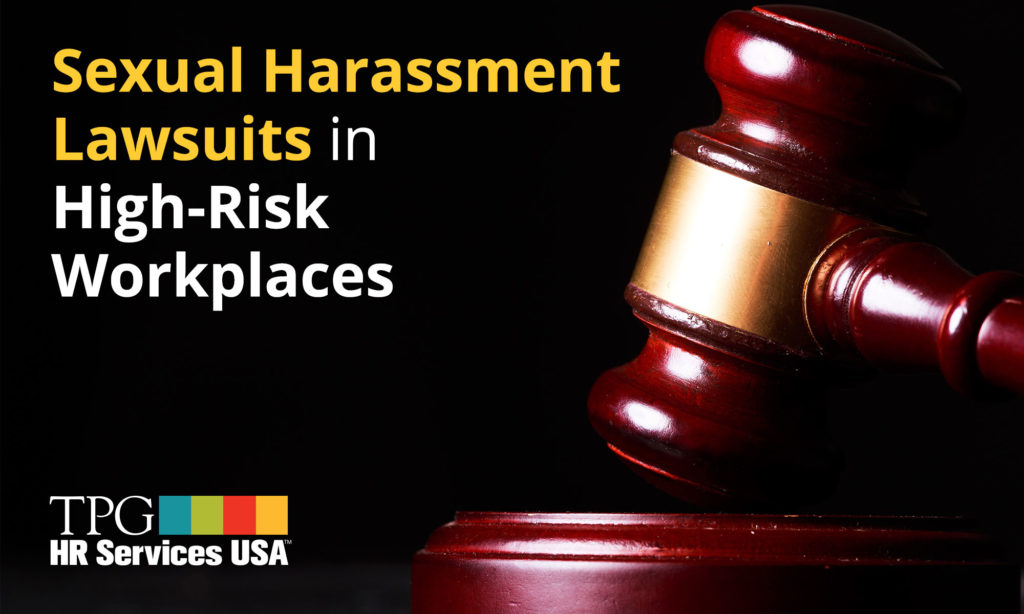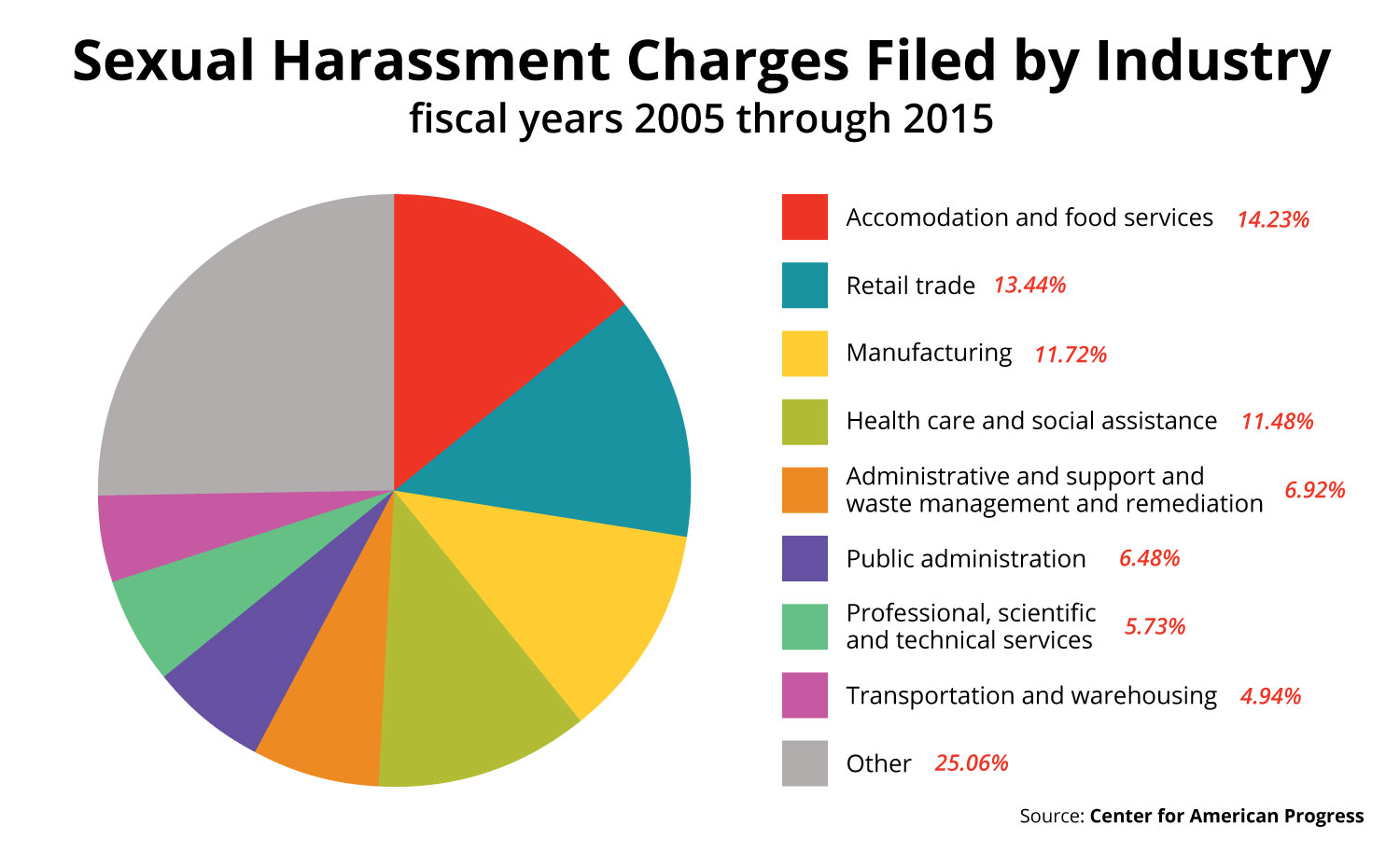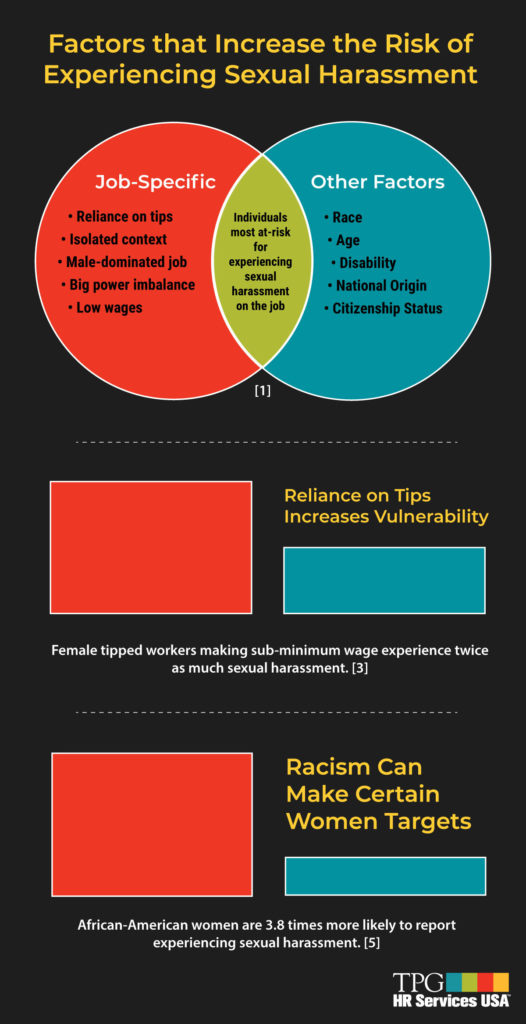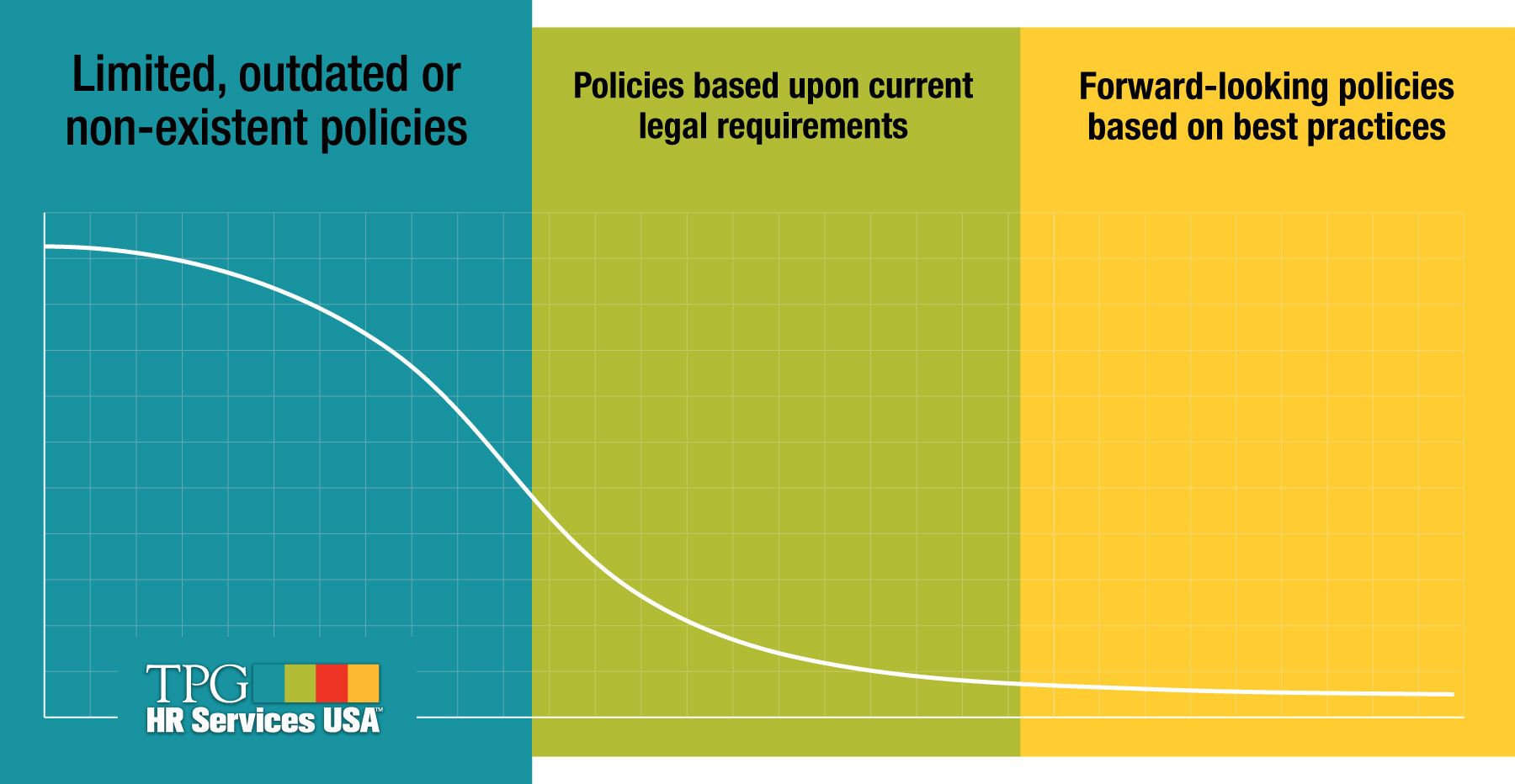
Sexual Harassment Lawsuits in High-Risk Workplaces

Ms. Pomerantz is the CEO of TPG HR Services USA and has over 35 years of Human Resources practices experience. She holds a Master’s in Human Resource Management (MHRM) and is a certified Senior Professional in Human Resources (SPHR) and SHRM Senior Certified Professional (SHRM-SCP). Mary also serves as CEO of Mary Pomerantz Advertising, one of the largest recruitment advertising agencies in the country. Earlier in her career, she was president of the 17th largest staffing firm in the country.

Since the rise of the #MeToo movement, the number of sexual harassment lawsuits in the workplace has increased dramatically in the U.S. and around the world. Proactive companies have wisely reevaluated their sexual harassment policies and training or in some cases implemented them for the very first time, or in a very long time. The most problematic of these cases involve workplaces that have allowed “high-risk” environments for sexual harassment to be created. HR professionals are responsible for the compliance and enforcement of workforce regulations in an effort to save their companies from costly litigation.
Most Common Elements of Workplaces at High Risk for Sexual Harassment
Sexual harassment in the workforce remains a pervasive problem – throughout the country and across a variety of industries. And, although sexual harassment occurs in every type of workplace, workers in certain fields suffer a disproportionate share of the negative impact resulting from this type of legally-prohibited behavior. The Institute for Women’s Policy Research has identified 5 work-related factors that are associated with an increased risk of sexual harassment and assault in the workplace. These factors include:
- Working for tips
- Working in an isolated context
- Lacking legal immigration status or having only a temporary work visa
- Working in a male-dominated job
- Working in a setting with significant power differentials and “rainmakers” [1]

Additional Components that Frustrate Enforcement Efforts
According to the IWPR, “these structural risk factors often intersect and are exacerbated by racism, discrimination, and harassment on the basis of age, disability, or national origin.” In addition, low-wage jobs in and of themselves can make harassment more common or less likely to result in formal complaints against the harasser – two factors that reinforce one another. Low-wage jobs are more likely to take place in smaller, less formal workplaces without official mechanisms for lodging complaints, and low-wage workers are less likely to file complaints due to the greater risk of extreme financial hardship if they were to leave or be fired in retaliation. [2]

A Case Study: Food Services Workers
According to data from the Equal Employment Opportunity Commission (EEOC), the industry with the largest percentage of sexual harassment claims filed is “accommodation and food services,” accounting for over 14% of all sexual harassment claims. One of the largest segments of this group of employees is restaurant workers, such as those in fast food or “tipped server” restaurants. The fast-food segment of this industry is particularly egregious in the number of self-reported cases of sexual harassment by employees. Among fast-food employees, a recent survey reports the following:

two-thirds of female workers and more than half of male workers had experienced sexual harassment from restaurant management

nearly 80 percent of women and 70 percent of men reported sexual harassment from co-workers

nearly 80 percent of women and 55 percent of men experienced some form of sexual harassment from their customers. [3]
As Reliance on Tips Increases, So Does Exposure to Harassment
This problem, however, is not simply in the fast-food segment of this industry. In fact, studies of restaurant servers, many of whom are women who rely upon “tips” as a substantial amount of their compensation, have shown a disturbing trend, particularly among “sub-minimum wage” restaurant servers. A survey by the Restaurant Opportunities Center found that women restaurant workers who were paid a sub-minimum wage of only $2.13 as “tipped workers” are twice as likely to experience sexual harassment from managers, co-workers, and customers as women servers in states that pay the same minimum wage to all workers. This dramatic disparity shows that the greater one’s reliance on tips to make a living wage, the more likely one is to have to endure harassment, often without complaint for fear of losing one’s income.

The EEOC has Taken Notice
A recent lawsuit by the Equal Employment Opportunity Commission illustrates that this unfortunate trend of certain workers being especially “at-risk” for sexual harassment on the job has not gone unnoticed by the Federal authorities responsible for investigating and resolving such claims. On 3/19/19 the EEOC filed a lawsuit on behalf of female employees of a Plantation, Florida IHOP who had been subjected to various forms of sexual harassment while working for the restaurant’s owner/general manager. The lawsuit alleges that the owner engaged in a pattern of harassing behavior towards these female employees that included asking female servers to go out on dates, making crude sexual comments to them about female body parts, and even touching them inappropriately. [3]
Potential Litigation Can Be Expensive & Time Consuming
Although the EEOC first tried to reach a pre-litigation settlement through its conciliation process, this attempt failed in this case, resulting in a court filing for back pay and compensatory and punitive damages for the victims of this discrimination. These costs, in addition to the legal fees incurred by the company in question, are likely to be quite high when all of the numbers are calculated. However, they also serve to send a message that all employees, no matter what industry or workplace they work in, deserve to work in an atmosphere free from sexual harassment. In the words of Michael Farrell, director of the EEOC’s Miami District Office, “The EEOC’s Select Task Force on Harassment continues to look for solutions to the problem of sexual harassment in the workplace. Employers must follow federal law, which protects employees from sexual harassment at work.” [4]
Six-figure settlements have become commonplace in the USA in recent years. Employers who are not being diligent in their efforts to be proactive are putting their companies at risk for these potentially expensive lawsuits. Evidence of this is clearly seen by the skyrocketing number of sexual harassment/hostile workplace advertisements being purchased by law firms around the country in the past two years since the creation of the #MeToo Movement. Proactive employers need to establish a clear company policy concerning sexual harassment in the workplace and ensure it is implemented with mandatory company training for all employees.

Best Practices in Harassment Prevention Offer Long-Term Protection
Instead of just instituting the “bare minimum” of harassment prevention policies and practices, it almost always pays off to try to design and put into place policies that follow the current best practices in the field. In this way, you can avoid falling prey to “grey areas” in the law that may result in costly problems for your company in the future. Sexual harassment is an area where laws, regulations, and norms are constantly shifting towards greater protections and awareness; don’t let your company get caught lagging behind this shifting curve, placing you at risk. It is always better to devise and implement forward-looking sexual harassment prevention policies, based on current best practices, that will protect your company and its employees now and well into the future. Experienced HR professionals in this field are the best source of knowledge about what today’s best practices are; tapping into their expertise is the best way to devise sexual harassment prevention policies and procedures that will stand the test of time.
Most Small Businesses’ Sexual Harassment Prevention Policies

How to Protect your Business and Employees
The best way to avoid these kinds of costly legal battles – and to ensure that your company’s workforce is not subjected to the morale and productivity-destroying consequences that often arise from sexual harassment – is to make sure that your company’s sexual harassment policies and their implementation are up to the task. This includes making sure that you have clearly stated policies that are consistent with all relevant regulations and best practices in the field. It is also critical that you communicate these policies clearly, consistently, and frequently to employees at all levels of your business. And, finally, you must ensure that your policies are implemented fairly across the board, without any favoritism or concern for the level of relative “importance” of the accused harasser or alleged harassment victim.
How TPG HR Services Can Help
If you need assistance with developing or updating your company’s sexual harassment policies or their implementation – TPG HR Services can help. Our experienced team can conduct a review of your current situation, personally handle any difficult cases, and help you prepare for the future. Whether you want our input on codifying your sexual harassment policies, training your personnel in how those policies apply to them, or helping you work through potentially thorny harassment claims – TPG HR Services can be an invaluable partner for your business. Don’t let sexual harassment incidents derail the productivity and morale of your workforce. Your employees (whose performance directly impacts your company’s bottom line) will ultimately be more productive working in a harassment-free environment that is free of unwanted distractions.

